Aquarium decoration: beautiful DIY design
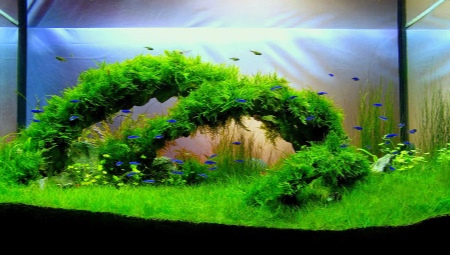
Home aquarium owners are very enthusiastic about its interior design. After all, fish are the same living creatures and beloved pets, respectively, their house should be cozy and beautiful. A properly selected aquarium design is not only living vegetation, but also decorative design with various multiple decorative figures, snags, stones.
At the same time, it is not necessary to contact design agencies, each aquarist will be able to create an unusual and interesting composition that meets the desires of the owner and a comfortable life for scaly creatures.
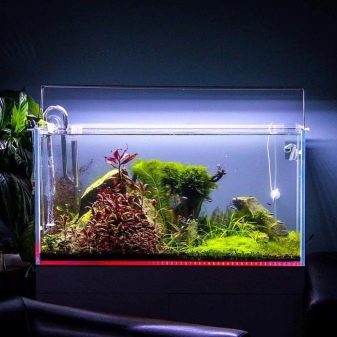
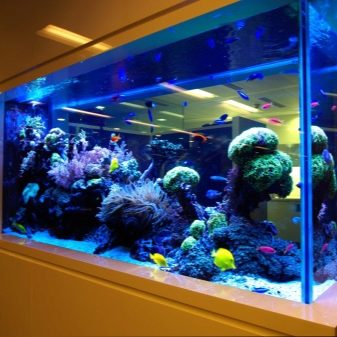
Styles
Today, there are several very interesting and common stylistic solutions for the design of the aquarium, which allow you to create a unique and inimitable composition inside the glass structure. For initial experiments, small aquariums with a volume of 20, 30, 40 liters will do.
With at least minimal experience in creating an aquarium design, you can start decorating larger volumes, at least 50 or 60 liters. But in glass structures of large sizes, 200 liters or more, it will be possible to construct a whole underwater town with multiple decorative elements. Fish do not care about the aesthetics of the house, the main thing is that the composition contains nooks and crannies where scaly creatures can hide.
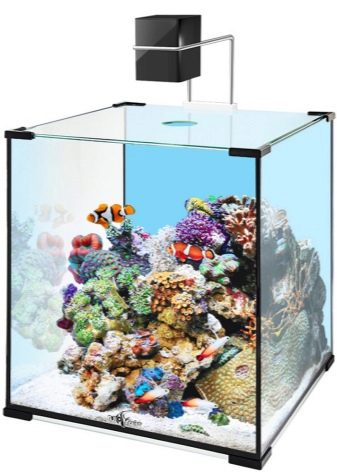
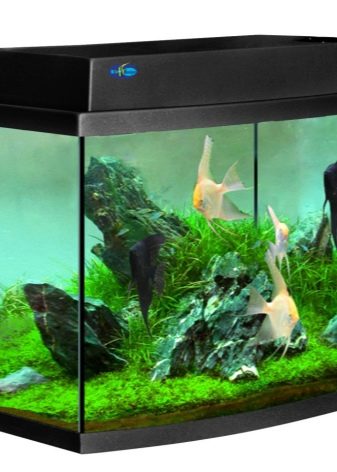
You should familiarize yourself with the most common aquarium styles.
Dutch
The history of the emergence of this style begins in the 50s of the last century and since then has enjoyed wide popularity in the world of aquascapers.The main characteristic of Dutch aquarium styling is densely planted plants and densely arranged decorative elements that take up almost all of the free space. This is especially true for the bottom of the aquarium.
During visual inspection, there should be no empty areas at the bottom of the exposition. For this reason, planting of a large number of plants of different sizes is required, among which a contrasting combination of red and green shades is welcome.
The middle of the aquarium should be framed with driftwood or a structure made of large stones.
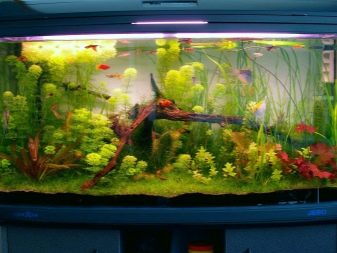
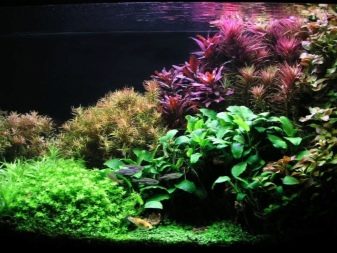
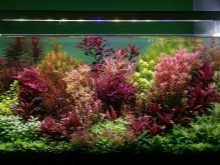
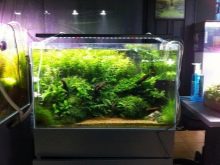
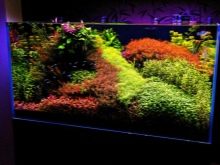
Natural
When using this style, it is important for aquascapers to emphasize the maximum interconnection of natural elements. A variety of elements can be used in the composition, for example, stones or driftwood. They do not have to be placed far from each other, thanks to a creative approach, it will be possible to group natural elements in a mysterious composition that hides a secret plan.
Choosing a variation of the Iwagumi design, the aquarist will need to create an unusual composition of figures in the form of decorative houses or ships, furnished with Japanese bonsai and stones.
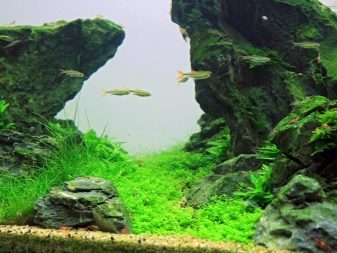
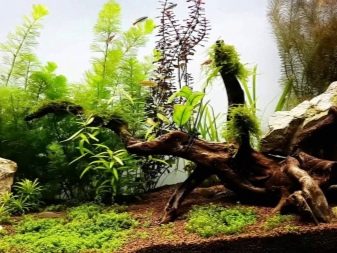
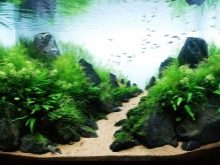
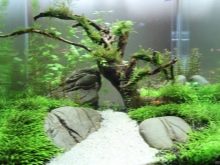
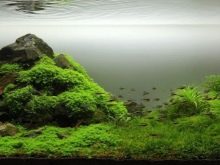
Of particular interest when creating a natural style is the variation of the design of the wabi-kus. Its distinctive feature is a moss bump located above the surface of the aquatic environment.


Pseudomore
The presented style of aquarium design does not require large expenses from its owner. To create a pseudo-marine environment, you will need to place ordinary soil at the bottom of the aquarium and plant plants that do not require special care. It is preferable to use lamps with blue tones as a backlight.to visually take on a sea shade of water. Shells are used as additional elements to emphasize the marine theme, do not forget about corals, and artificial shells will help to complete the design of this beauty.
The finished composition will delight the guests who come, it will seem to everyone that they actually got to the depths of the sea. But in general, such aquariums are considered freshwater, so it is necessary to stock fish that are suitable for this environment.
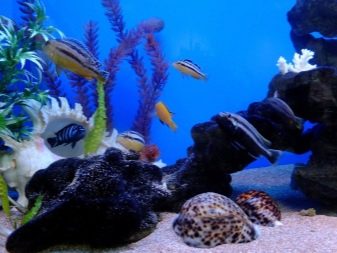
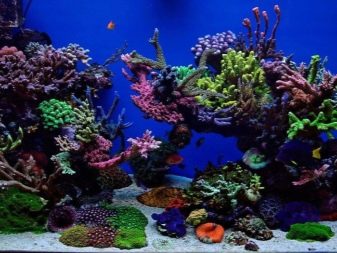
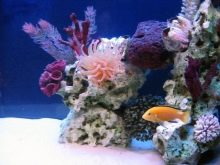
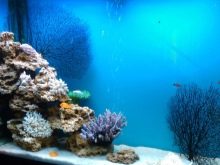
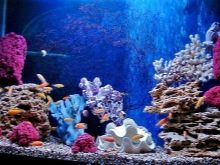
Collection
For most aquarists, creating a Dutch aquarium style can be a daunting job, especially for beginners. Therefore, aquascapers were able to create a simplified Dutch theme, which they called the collection style. Its essence lies in the planting of small-leaved and fast-growing plants, which in a short period of time can increase in size and occupy the entire soil.
The collector style is preferred in aquariums with a minimum volume of 100 liters.
The collector style is not recommended for glass structures with a smaller size. Otherwise, the entire space will be covered with green plantings, and fish and other creatures will have no free space for existence.

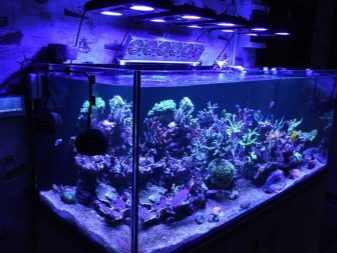
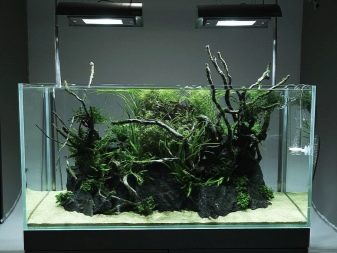
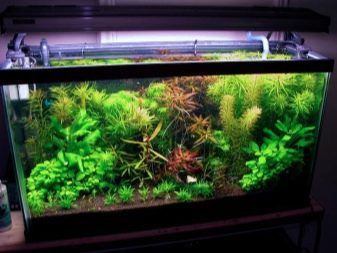
Rock garden
For most modern interiors of houses and apartments, it is very difficult to enter the usual styles of aquarium design. So, a glass structure, decorated in the Dutch style, will not be able to harmoniously combine with the interior of a high-tech or loft apartment... Japanese designers have managed to find a solution to such a complex issue. They were able to compose the aesthetics of the decorations, leaving most of the underwater space unfilled.
To do this, you will need to use just ordinary soil, sand, a few stones, carpet-type algae and a small school of small fish. In this case, stones play the most important role.It is enough to use only 4 natural elements, where 1 should be large in size and be the main one, 2 stones should be of medium size and be additional.
But 4 stone should differ in the smallest size, while it is not necessary to use real stones, they can be purchased at pet stores.
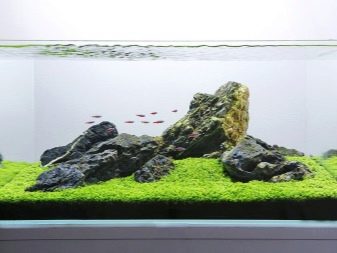
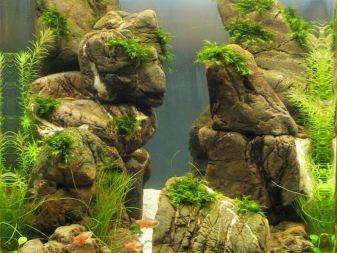
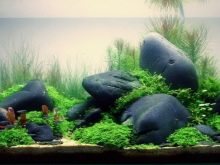

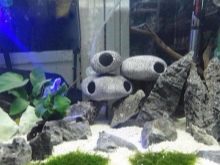
Based on fairy tales
The fabulous style of the aquarium is considered the brightest and most interesting, it is especially often used when decorating aquariums in houses where small children live. The designers were inspired to develop the style of an underwater fairy tale after watching the famous cartoons "Nemo" and "The Little Mermaid". The very first fabulous composition to appear in the aquatic environment of home aquariums was recognized by aquascapers and still occupies the top rung of the leadership ladder.
The main thing before registration is to clearly follow the rules for creating decor. To begin with, draw up a sketch, selected from the cartoon you like, select the fish that match in color and shape. As additional elements, you may need to purchase shells of bizarre shapes and different sizes, as well as grottoes, corals with neon overflow, artificial treasures. Small algae, unpretentious in care, will be able to emphasize the beauty of the fairy-tale world.
Children with great pleasure will spend their free time near the fabulous aquarium, especially if the interior design is presented in the composition of the child's favorite cartoon.

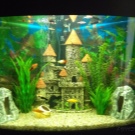
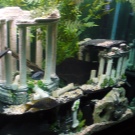

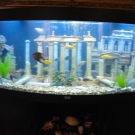
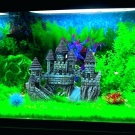
Decorations
Before starting to create a special design for an underwater interior, the aquarist needs to familiarize himself with some rules, which should be guided not only at home, but also in industrial work.
- The most important thing is caring for your underwater pets. They need to be removed from the aquarium and temporarily transplanted into a separate tank with the usual aquarium water, thus avoiding the injury and stress of the pets. After decorating, the fish are sent back to the aquarium with the same water.
- Particular attention should be paid to disinfecting decorative elements that will be placed inside the glass structure.
Today, every aquarist can decorate his aquarium with the most unusual elements. They can be purchased at almost any pet store that has a department for marine and freshwater creatures.
Experienced sales consultants will help you choose the right models of castles, shells, corals and even stones that will help you decorate your aquarium in accordance with the chosen style.
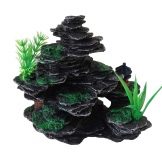
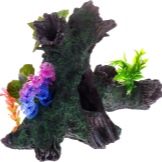
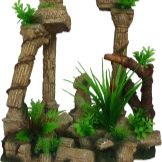

Decorative background
Aquarists pay special attention to the decorative background when creating a unique atmosphere inside the aquarium. It is sold as a colorful film with different images. The background is attached to the rear wall of the aquarium from the outside, which is not only convenient for humans, but also safe for the inhabitants of the aquarium. When composing the composition, the elements of the interior design should smoothly transition into the background edging, due to which the aquarium receives a visual volume.
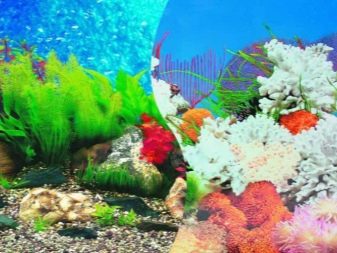
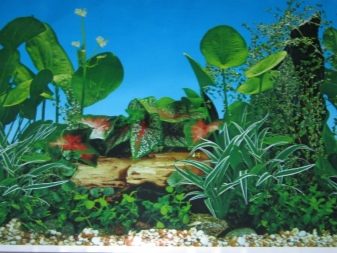
In the recent past, in the markets one could find a decorative background with images corresponding to the underwater world. Today, everyone can purchase for themselves the most unusual monochromatic films with a variety of colors., as well as the most unusual designs, for example, stones of different shapes and sizes or bricks. Backgrounds depicting scenes from famous cartoons are considered separately.

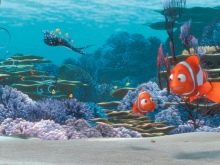
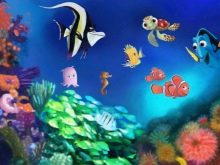
In large stores, you can purchase specialized kits, which contain stickers and layouts that match the chosen style of design of the aquarium space. Today, there are three-dimensional decorative backgrounds on sale that are attached to the back wall of the aquarium, but only from the inside.But experienced aquarists know that such decoration can be dangerous for aquarium inhabitants.
If the background film accidentally peels off, the fish will swim behind it, the pet will not be able to get out of this trap on its own.
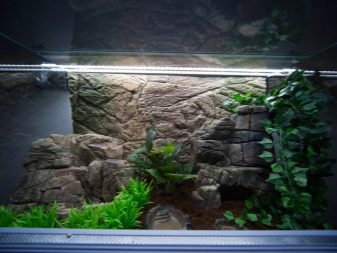
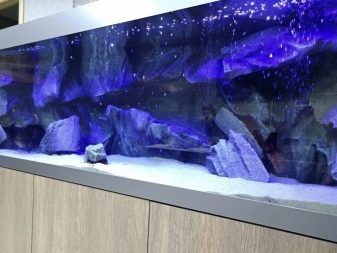
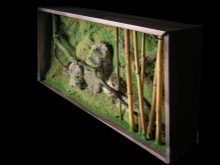
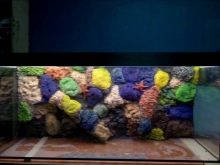
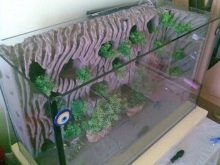
Natural materials
Most aquarium dummies purchased to decorate the interior of glass structures are made from synthetic resins. For this reason, artificial decorations must be thermally treated before placing them inside the aquarium and letting the pets in. Along with artificial elements, natural natural decorations, for example, driftwood or stones, are in great demand. Much time has passed since the idea of decorating aquarium compositions with natural materials arose, and wooden branches are still laid out in the most unusual compositions at the bottom of the aquarium. Quite often, driftwood is used as an imitation of tree roots. In addition, they can be used to create an unusual slope descent.
In most cases, driftwood is used as a base for anchoring moss, which is sold tied and attached with strings to the base. After some time, the green carpet grows and forms an imitation of thickets. Some aquarists, purchasing natural driftwood or finding them on the street, do not handle them, which can deplorably affect the state of the water and the life of the aquarium world.
Even this natural material needs to be boiled in order to rid the wood of harmful bacteria. The processing of natural stones is carried out in a similar way.

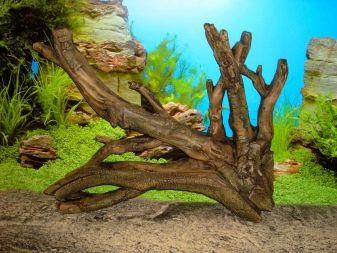
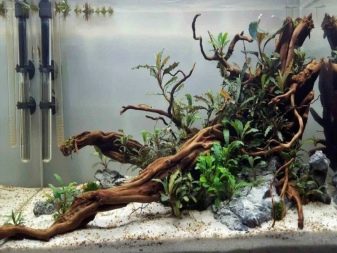
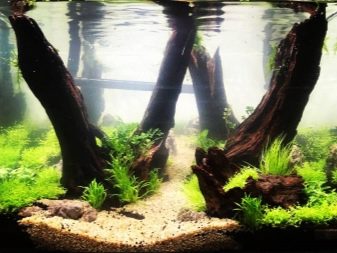
It is worth noting that the stone material, in contrast to the dummy sold in the pet store, looks much more natural. It is only when collecting them that you need to take some care. Not all stones are suitable for decorating home aquariums; many of them release lime, which is harmful to living things and plants. Quartz stone, basalt, granite or sandstone are best suited as decorating elements.
When forming a stone composition, it is important to take into account the future population of the aquarium, what size they will be, their characteristics and preferences. For example, shrimp creatures like to climb in small caves, while cyclides prefer caves made of sandstone.
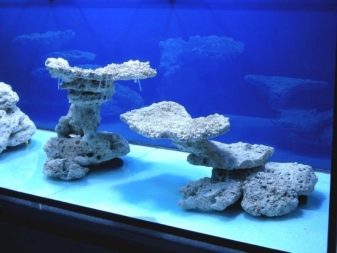
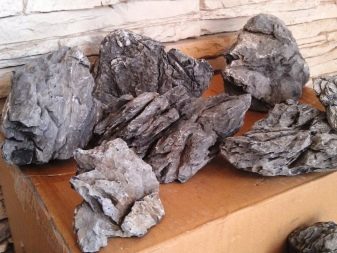
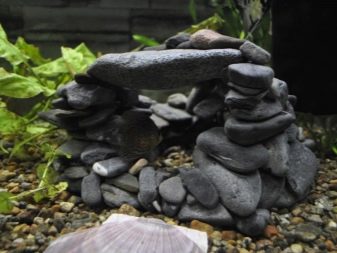
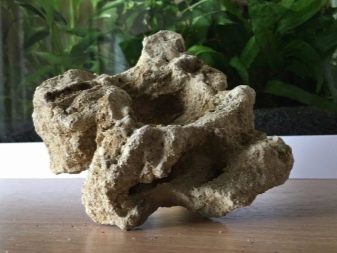
Live plants
When decorating an aquarium, special attention is paid to plants, because they serve as a shelter and food for the fish. They also give off oxygen, which is a very important advantage for seating live decorations.
The main thing is that the flowering vegetation is safe. For aquarists without experience in this matter, it is best to contact a specialized department of the pet store, where sales consultants can select suitable living decorations, taking into account the growth rate, the living fish and the size of the glass structure. It is strictly forbidden to collect unknown plant species in the wild and plant them inside the aquarium.
An improperly selected bush, even of a miniature size, can ruin the aquarium life.
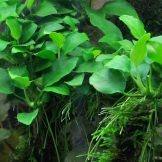
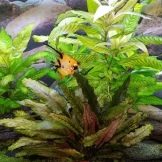
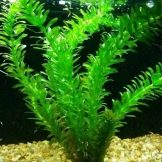
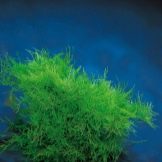
Soil and sand
You should be extremely scrupulous about the choice of soil. It is recommended for novice aquarists to purchase ready-made soil mixtures, since it is extremely difficult to take into account all the criteria and features of the layout of the constituent elements when making it yourself. For example, pick up particles of the same size, pick up all the soil elements in the appropriate color scheme. Besides, it is important to consider the species of fish that will live in the aquarium, decorative background and compositional design.
In aquariums that will only grow live plants, an extra layer of soil called soylo is used. It is located between the top and bottom covers of the decorative ground.It is soil that feeds plant roots with useful vitamins and minerals. The same goes for the sandy bottom. Although in aquariums for fish, sand is rarely used.
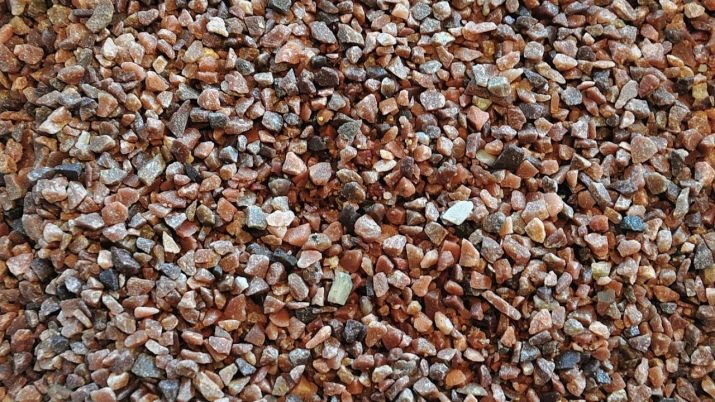
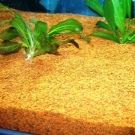
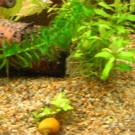
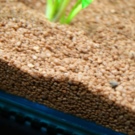
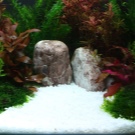
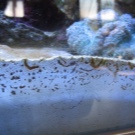
Artificial elements
Today, there is a huge variety of artificial decorations for aquariums, among which there are both miniature bushes of plants and huge background walls located inside the glass structure from the back. These walls may have the design of a mountain slope or an abandoned palace of the underwater king, but the image of the sunken Atlantis will look very interesting in the decorative design.
The main thing is to remember that all artificial materials must be installed in fresh aquariums; artificial decor is not suitable for sea fish.
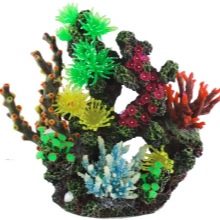

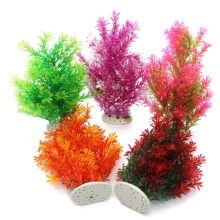
Decorating order
An experienced aquarist will be able to create a composition according to the chosen style without much difficulty with his own hands, having acquired the necessary decorative elements, plants and soil in advance. And all thanks to the sequence of actions, which is very important to remember for novice aquarium lovers.
Of course, many aquascapers can share different ways of decorating aquariums, and always in a different sequence, but it is best not to deviate from the following generally accepted canons:
- you need to understand and choose the appropriate style for the design of the aquarium world, and then develop a design yourself;
- purchase the necessary elements and decor items;
- all decorative parts, even natural stones and driftwood, must be treated accordingly;
- pour a primer layer on the bottom of the aquarium;
- in the case of a living freshwater aquarium, pour soylo on top of the primer layer;
- the upper part is covered with decorative soil;
- neatly arrange the processed decorative elements;
- fix the equipment, namely the compressor, thermometer, lamp, heater;
- plant plants by making a hole for them;
- pour water gently;
- add underwater inhabitants to the aquarium;
- sea corals are placed at the very last moment after the landing of the fish.
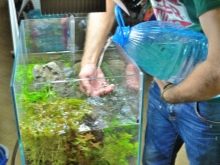

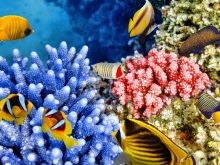
Beautiful and original ideas
Aqua design plays an important role for fish lovers. A simple glass jar with a pair of fish in it is completely irrelevant for a modern person. Aquarium individuals, like any other inhabitant of the globe, have gone through multiple steps of reincarnation, and this applies not only to the external image, but also to the interior of their house.
So the Dutch style. Here it is the beauty of greenery, smoothly moving from low-growing moss to tall plants. It can be seen with the naked eye that there is no void at the bottom of the aquarium. In every corner there are beautiful bushes of various sizes, complemented by snags in the depths.
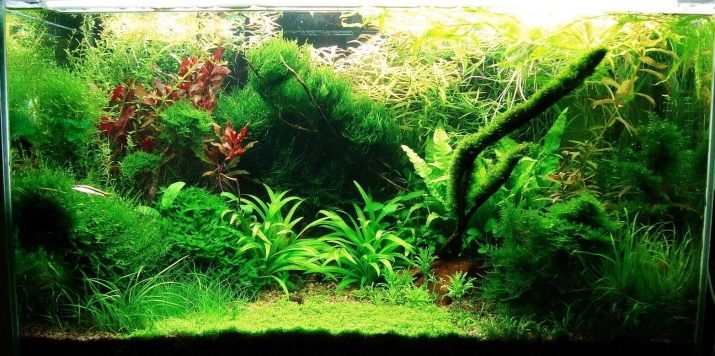
Representing the natural style of aquarium space, different design options come to mind, each of which can be translated into reality. In this case it seems that the aquascaper has transferred the image of beautiful mountain peaks to the vastness of the underwater world... Aquarium residents feel extremely cozy and comfortable in such an environment. At the bottom, undersized shrubs of various shapes are visible, each of which fits perfectly into the overall composition.
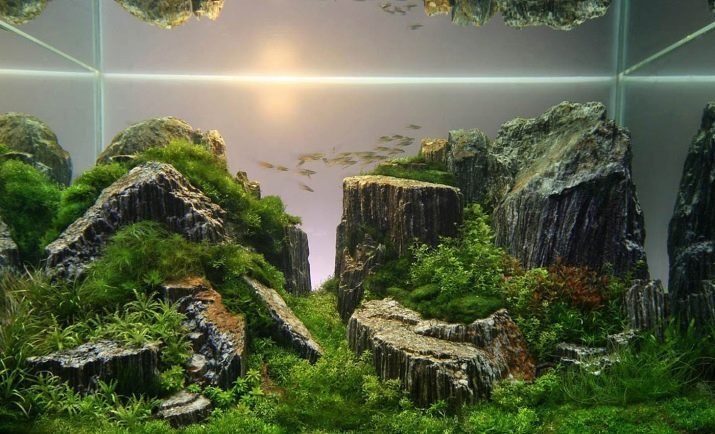
Many aquarists find it very difficult to maintain a saltwater aquarium, and indeed it is. But you can decorate a fresh aquarium in a marine theme, so much so that no one can find the difference.
The main thing is to choose the right scenery, background and lighting. In this version, the aquarium owner has thought through all the details to the smallest detail. Bright corals, colorful fish, stone decorations and shells. Only an experienced craftsman will be able to recognize the unusual style.
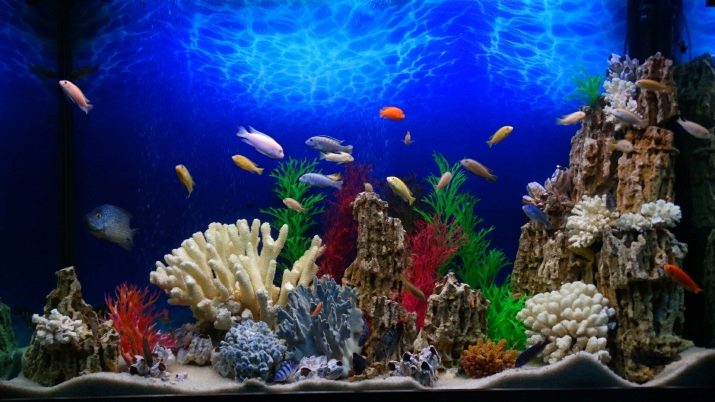
The beauty and sophistication of the collection style of the aquarium design is subtly felt in the presented version.A neat miniature tree located in the very center, as it were, releases its roots outward, and the rest of the bottom is covered with fast-growing underwater grass, which is easily trimmed and, if necessary, pinched off.
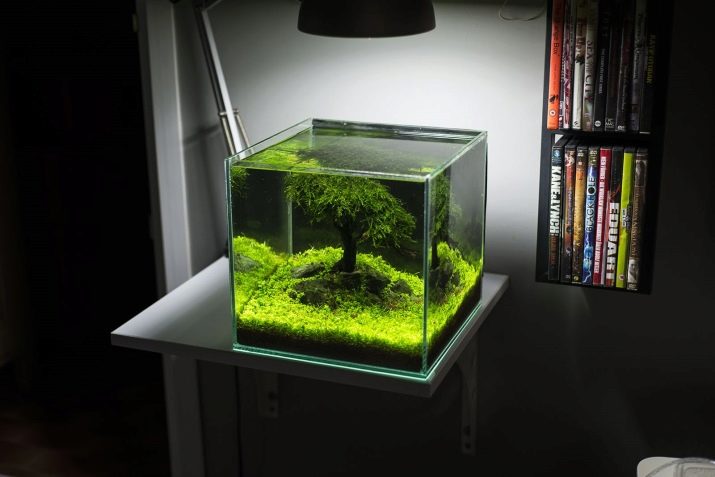
At first glance, it becomes clear that we are talking about the style of a rock garden. If, with a general description, it was not clear how the composition might look, then an illustrative example already forces one to show violent imagination. The rocky aquarium brings a bit of coolness and at the same time mesmerizes with its visual lightness.
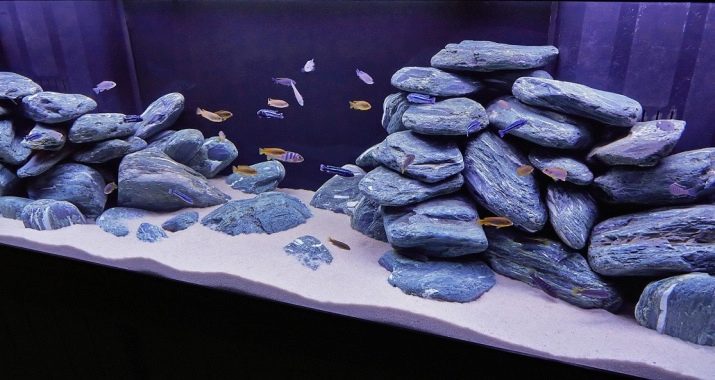
Modern fabulous aquariums require a modern touch. Any child will say that SpongeBob lives at the bottom of the sea.
To make the baby happy, you can make the image of the town with a Bikini-Bot in the aquarium.
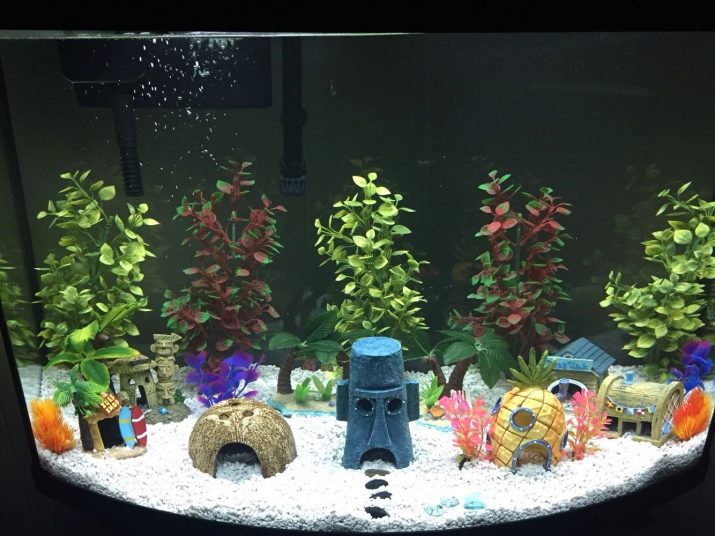
See below for a master class on decorating a 100 liter aquarium.








